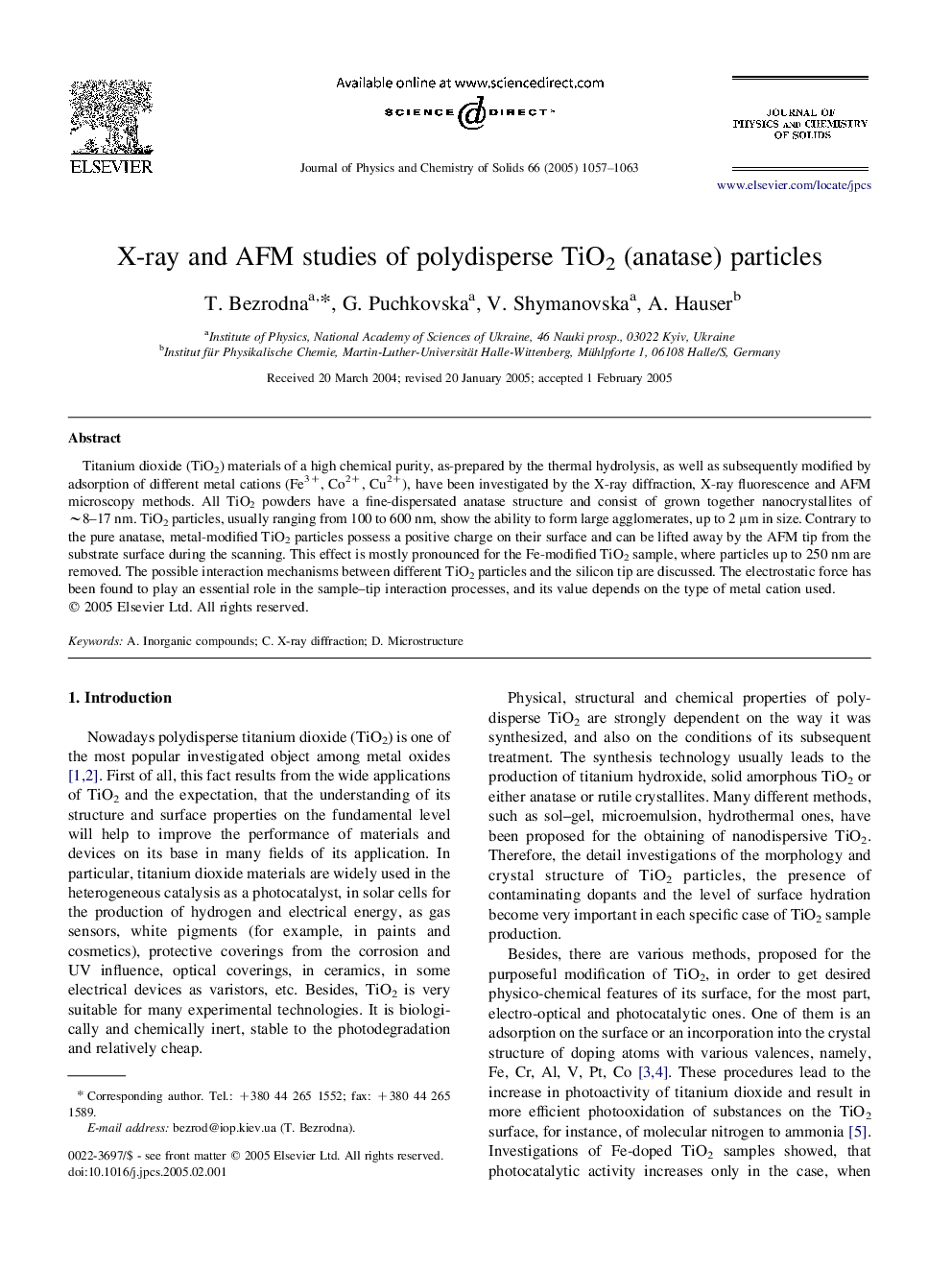| Article ID | Journal | Published Year | Pages | File Type |
|---|---|---|---|---|
| 9781705 | Journal of Physics and Chemistry of Solids | 2005 | 7 Pages |
Abstract
Titanium dioxide (TiO2) materials of a high chemical purity, as-prepared by the thermal hydrolysis, as well as subsequently modified by adsorption of different metal cations (Fe3+, Co2+, Cu2+), have been investigated by the X-ray diffraction, X-ray fluorescence and AFM microscopy methods. All TiO2 powders have a fine-dispersated anatase structure and consist of grown together nanocrystallites of â¼8-17 nm. TiO2 particles, usually ranging from 100 to 600 nm, show the ability to form large agglomerates, up to 2 μm in size. Contrary to the pure anatase, metal-modified TiO2 particles possess a positive charge on their surface and can be lifted away by the AFM tip from the substrate surface during the scanning. This effect is mostly pronounced for the Fe-modified TiO2 sample, where particles up to 250 nm are removed. The possible interaction mechanisms between different TiO2 particles and the silicon tip are discussed. The electrostatic force has been found to play an essential role in the sample-tip interaction processes, and its value depends on the type of metal cation used.
Related Topics
Physical Sciences and Engineering
Materials Science
Electronic, Optical and Magnetic Materials
Authors
T. Bezrodna, G. Puchkovska, V. Shymanovska, A. Hauser,
